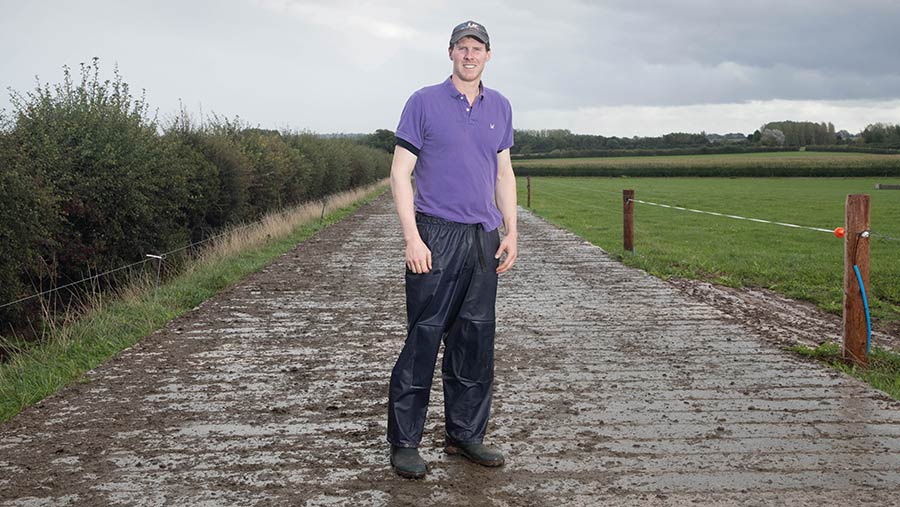Farmer Focus: Great growth but tricky grazing conditions
 © Tim Scrivener
© Tim Scrivener I think I cursed last month’s column singing the joys of an easy February. Obviously, March has been very wet, making grazing conditions tough and increasing feed costs when we’d normally plan on reducing cake intakes.
Luckily, getting ahead of ourselves in February did help, as we still have a reasonable stock of silage left, giving flexibility to house when required.
And slurry was spread in perfect conditions (ahead of target), with the spring rotation planner and grazing residuals being achieved effortlessly.
See also: How a dairy herd managed drought with 6.5p/litre feed cost
The mild weather has benefited growth, with grass growing at 42kg dry matter (DM)/ha a day last week, compared with this time last year, when it was only 16kg DM/ha a day.
Protecting pasture with on-off grazing is very time consuming with back-fencing and moving cows continuously to avoid poaching and wastage on higher grass covers.
We decided to keep the cows in a single mob to reduce the workload in fence-setting and decision-making. This has allowed us to be on and off a paddock much more quickly.
Having multiple gateways and water troughs strategically placed really helps in these wet conditions.
Research from Teagasc Ireland suggests a single poaching event can reduce pasture grown by 40%, so avoiding excessive damage is critical.
In our experience, if it’s given enough recovery time and rain soon after poaching, the pasture tends to recover well.
This spring will be a key time to make use of the growing conditions and to refill pits ready for winter. As an additional risk strategy, we will be farming an additional 90ha (222 acres) to help replenish forage stocks.
Youngstock have been grazing (or treading in) cover crops with some supplementation as baled silage, so intakes are kept stable on wet days.
A second dose of slurry has been applied umbilically onto silage and spring-cropping land, using a mobile nurse tank.
Although this method costs more, it has resulted in minimal damage, allowing us to plough before wholecrop cereals are planted.
It’s been a tricky month, but we’ve done our best to get grazed grass into the diet. We have cut daily cake intakes to 3kg a cow and we hope to drop further to 1kg a cow when grass intakes improve.

